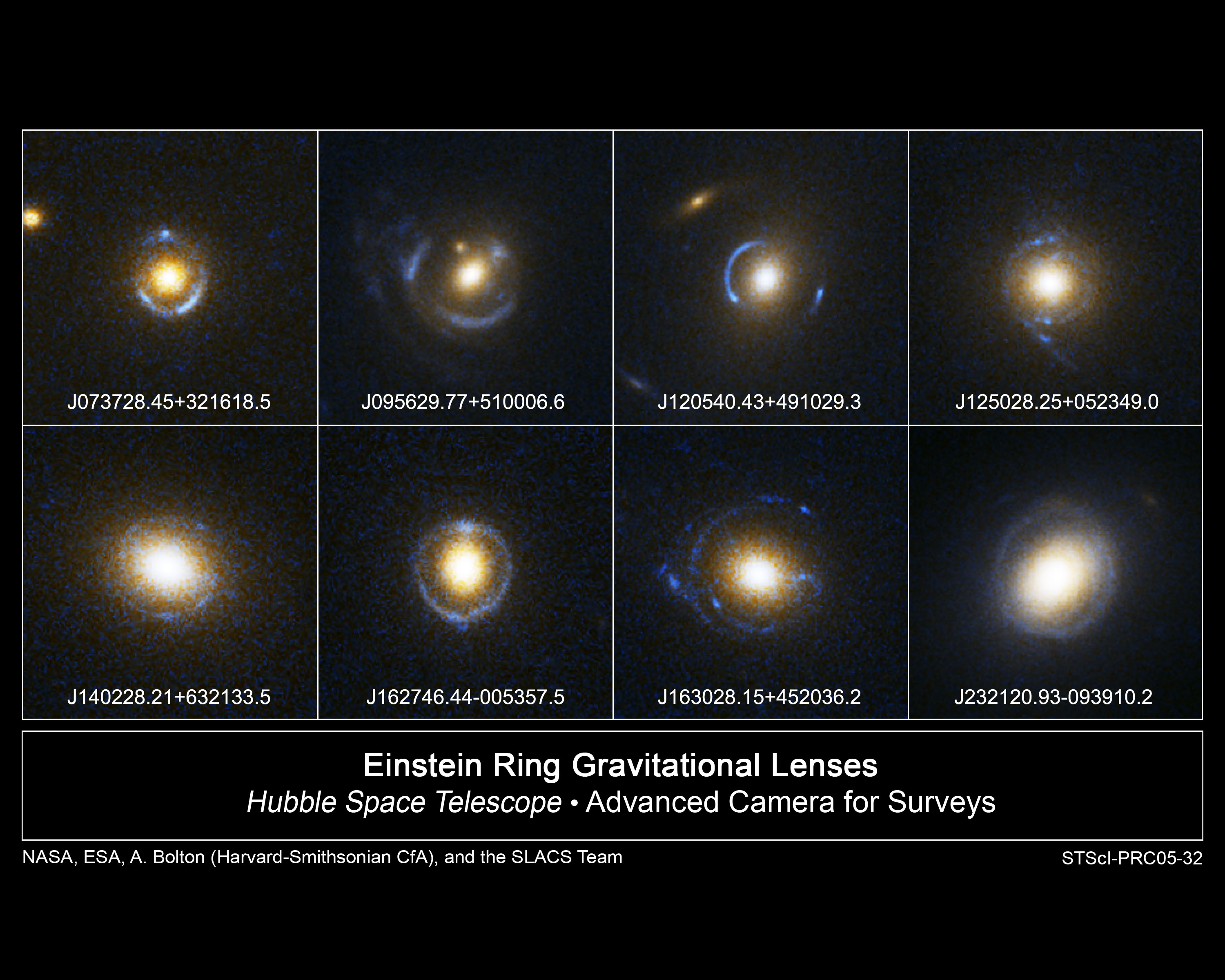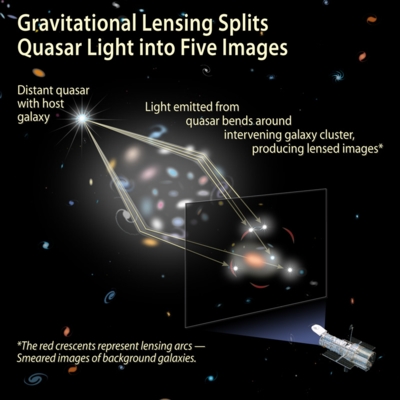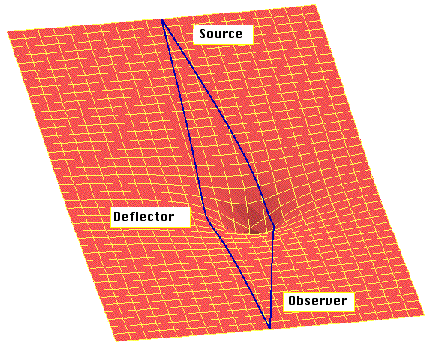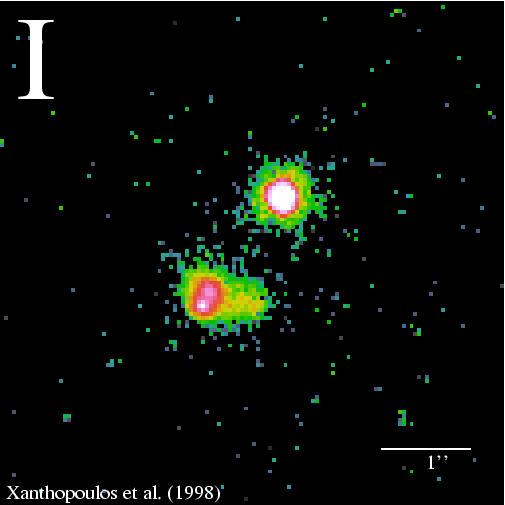
Posted on 11/11/2017 11:34:42 PM PST by ETL
Astronomers have uncovered an ancient cosmic artifact 11 billion light-years from Earth: the oldest spiral galaxy ever seen.
The newly discovered galaxy, known as A1689B11, is an ancestor of modern spiral galaxies like our own Milky Way, which are defined by long tentacles of gas, dust and stars that wrap around the galaxy's central bulge.
"Spiral galaxies are exceptionally rare in the early universe, and this discovery opens the door to investigating how galaxies transition from highly chaotic, turbulent discs to tranquil, thin discs like those of our own Milky Way galaxy," Renyue Cen, a co-author of the new paper describing the findings and a senior research astronomer at Princeton University, said in a statement.
Galaxies come in many different shapes and sizes, and researchers think many spiral galaxies form mainly through mergers of smaller elliptical galaxies, although many factors can affect how a galaxy changes its shape over time, according to NASA. Elliptical galaxies are disks that can be mostly circular or very elongated but lack the arm-like features of spiral galaxies.
Astronomer Edwin Hubble was one of the first people to theorize that elliptical galaxies evolved to form spiral galaxies, although he did not fully appreciate the complexity of galaxy evolution, according to the European Space Agency's Hubble Space Telescope website. Nonetheless, researchers still refer to the time in cosmic history when spiral galaxies began to form from elliptical galaxies as "the Hubble sequence."
"Studying ancient spirals like A1689B11 is a key to unlocking the mystery of how and when the Hubble sequence emerges," Cen said in the statement from Swinburne University in Australia (where some of the other co-authors are based). Previously, researchers reported finding spiral galaxies that date back 10.7 billion years.
The newly discovered galaxy is too far away to be observed directly with modern instruments. So the researchers took advantage of a natural phenomenon known as gravitational lensing, in which the gravity of a massive object (like a galaxy or a cluster of galaxies) bends and amplifies the light from an object that lies beyond it (as seen by an observer). In this way, the authors of the new research paper were able to detect light from the very distant spiral galaxy A1689B11 by looking for the effects of gravitational lensing around the edge of a galaxy cluster that is nearer to Earth.
The observations were conducted using an instrument called the Near-infrared Integral Field Spectrograph on the Gemini North telescope, located on Mauna Kea in Hawaii. The researchers were able to "look 11 billion years back in time and directly witness the formation of the first, primitive spiral arms of a galaxy," Cen said in the statement.
Because light travels at a finite speed, the light from A1689B11 left that galaxy 11 billion years ago, when the universe was less than 3 billion years old. In this way, astronomers can look back in time and learn about the history of the universe through direct observations.
That is, it's '11 light-years away', where ONE light-year, the *distance* light travels in a year at its fixed speed of 186,000 miles per second, works out to about 5.9 TRILLION miles. And so this ancient galaxy is 5.9 trillion x 11 billion miles away. So if you plan on visiting, pack a few extra sandwiches.





For many of the cases of interest one does not need to fully solve the general relativistic equations of motion for the coupled spacetime and matter, because the bending of spacetime by matter is small. (Quantitatively the matter bending space is moving slowly relative to c, the speed of light and the "gravitational potential" Phi induced by the matter obeys |Phi|/c2 << 1 .)
A sketch of the paradigm of a lensed system is below ( source): 
In a system where lensing occurs there is a
The most extreme bending of light is when the lens is very massive and the source is close enough to it: in this case light can take different paths to the observer and more than one image of the source will appear.  A multiple image is shown at right (source). The first example of a double image was found in 1979, of a quasar. The number of lenses discovered has been used to estimate the volume of space back to the sources. This volume depends strongly on cosmological parameters, in particular the cosmological constant (a classic reference is here).
A multiple image is shown at right (source). The first example of a double image was found in 1979, of a quasar. The number of lenses discovered has been used to estimate the volume of space back to the sources. This volume depends strongly on cosmological parameters, in particular the cosmological constant (a classic reference is here).
If the source varies with time, the multiple images will vary with time as well. However, the light doesn't travel the same distance to each image, due to the bending of space. So there will be time delays for the changes in the images. These time delays can be used to calculate the hubble constant H0. A few systems with these time delays have been found and are under study. Much of the subtlety in this work lies with constructing the model of the mass distribution forming the lens (see this review for technical detail).
In some special cases the alignment of the source and the lens will be such that light will be deflected to the observer in an "Einstein ring." Some examples and references can be found here on Wikipedia. More often than a ring, the source may get stretched out and curved, and form a tangential or radial arc. A lot of mass is needed to cause an arc to appear, so that properties of arcs (numbers, size, geometry) can often be used to study massive objects like clusters. One can also, given a set of images, try to reconstruct the lens mass distribution (for an example of reconstructing a cluster as a lens see this technical paper).
In many cases the lens is not strong enough to form multiple images or arcs. However, the source can still be distorted: both stretched (shear) and magnified (convergence). If all sources were well known in size and shape, one could just use the shear and convergence to deduce the properties of the lens. However, usually one does not know the intrinsic properties of the sources, but has information about the average properties.
The statistics of the sources can then be used to get information about the lens. For instance, galaxies in general aren't perfectly spherical, but if one has a collection of galaxies one doesn't expect them all to be lined up. Thus, if this set of galaxies is lensed, on average, or statistically, there will be some overall shear and/or convergence imposed on the distribution, which will give information about the intervening lens(es).
There is a distribution of galaxies far enough away that can be treated as sources, and thus clusters nearby can be "weighed" (i.e. have their mass measured) using their lensing. Superclusters have been considered as well. In addition, theories of cosmology predict the distribution of large scale structure, the distribution of matter in the universe.
The statistical properties of the large scale structure (e.g. the probability of finding a galaxy at one place when there is another a certain distance away) can also be measured by weak lensing, because the matter will produce shear and convergence in distant sources (which can be galaxies, or the cosmic microwave background, for example). Weak lensing is a useful complement to measures of the distribution of luminous mass such as galaxy surveys. Lensing measures all the mass, in particular the dark matter as well as the luminous matter.
In some cases the lensing is of an image that is so small or faint that one doesn't see the multiple images-- the additional light bent towards the observer just means that the source appears brighter. (The surface brightness remains unchanged but as more images of the object appear the object appears bigger and hence brighter.) This lensing can have effects in many measurements, as sources which would have otherwise been too dim become visible. This can be helpful, as when one wants to view objects that would otherwise be too far away. It can also be a problem, for example when one is trying to measure all objects brighter than a certain amount in a certain region and lensing introduces objects by magnifying objects enough to bring them into the sample.
There are ongoing searches to use lensing to find a type of dark matter called MACHOs (massive compact halo objects). Although MACHOs, as dark matter, cannot be seen themselves, if they pass in front of a source (e.g. a star nearby), they can cause the star to become brighter for a while, e.g. days or weeks. This effect has been observed, but determinations of the dark matter are not yet conclusive. Observations are underway by many groups. See these notes by Michael Richmond on Gravitational Microlensing: Searches and Results.
Incredible 2-hr NOVA documentary here on our own Milky Way Galaxy.
Inside the Milky Way - Full Documentary, 720p
(actually 1hr, 36min, since there are no commercials in this apparent DVD rip upload)
https://www.youtube.com/watch?v=ttz4Sr0tZFg
Astro Ping...
It’s nice to know we’re not at the edge, where if we went over we would end up on the other side...
Lol! Well, according to some models of the universe, if you traveled far enough into deep space you would do a loop and basically return to where you started. This is assuming there is enough matter in the universe to cause it to curl up on itself: a ‘Closed Universe’, as opposed to open or flat.
Thanks ETL. Ping to APoD members.
You’re welcome, and thank you!
“The newly discovered galaxy, known as A1689B11...”
All of this cosmological discovery is fine but I still think we need to go back to the moon ASAP. I think we could do it in five years or less. However, all of the ‘countdown clocks’ on TV and the internet would have to be reset from time to time. MAGA!
Awesome
Lol! Just realized I screwed up in my initial comment in post one. I wrote the ancient galaxy was *11* light-years way, as opposed to 11 *billion* light-years.
However, at the end of the comment I did say billion.
______________________
Post 1
“Because light travels at a finite speed, the light from A1689B11 left that galaxy 11 billion years ago”
That is, it’s ‘11 light-years away’, where ONE light-year, the *distance* light travels in a year at its fixed speed of 186,000 miles per second, works out to about 5.9 TRILLION miles. And so this ancient galaxy is 5.9 trillion x 11 billion miles away. So if you plan on visiting, pack a few extra sandwiches.
Next thing you know, and you've got a spiral galaxy swirling down the crapper.
Your math is not right.
It’s actually much farther away than that. You haven’t taken into account the expansion of the universe that’s been going on the whole time that its light has been traveling. It’s somewhere in the vicinity of two to three times that far away. It is was 11 billion ly away 11 billion years ago.
Something interesting that I would like to point out is that, as most of you may know, as light from such remote sources travels through space to us, due to universal expansion, it stretches out to longer wavelengths. ie, it is “red shifted”.
And in a case like this, an object 11 billion light-years distant, the shift is comparatively large. In other words, for us to receive these images in the near infrared today, the light must have started out at a shorter wavelength, quite possibly within the visible/optical range.
An even more interesting thing, IMO, would be in the case where light from a somewhat less distant source is received in the visible/optical range (less red-shifted), meaning it possibly started out in the ultra-violet UV range.
So we would then be ‘seeing’ something with our own eye from the UV part of the EM spectrum.
Non-visible/optical images (infrared, UV, gamma, microwave, radio, etc) are typically converted to false color images in order that there is something for people to see and study.
Here is the previous oldest spiral ever found...
An artist’s rendering of galaxy BX442, which is 10.7 billion light-years from Earth, and its companion dwarf galaxy (upper left).
Astronomers have discovered the universe’s most ancient spiral galaxy yet, a cosmic structure that dates back roughly 10.7 billion years, a new study reveals. ...”
https://www.space.com/16641-oldest-spiral-galaxy-hubble-telescope.html
What exactly are you referring to?
If we say that light from a distant galaxy took 10 billion years to reach earth (10 billion light years from Earth), why isn't it true that the galaxy is actually much further away since during that 10 billion year time since the light started its journey toward us, the galaxy has continued to move still farther away?
If this has any truth, then galaxies which are farthest away and traveling close to the speed of light away from us are almost twice the distance now (almost 28 billion light years away if the universe is 14 billion years old) as they were when the light started its journey!
It is completely legitimate to say that the galaxy is farther than 10 billion light years away from Earth now -- if you're using a particular definition of the "distance" to the galaxy.
Unfortunately, distance is one of those things that has an intuitive meaning in everyday life but is not so intuitive in our expanding universe!
Astronomers (and other people) are not always very clear about what they mean when they talk about an object's "distance", leading to a lot of confusion about this topic. Read on for a further explanation.
First of all, the expansion of the universe doesn't consist of galaxies moving through some static space, but rather the "stretching" of the space itself. The light is moving through this expanding space and has to travel the initial distance plus whatever distance is added due to the universe's expansion during the course of the journey. It's like running on a racetrack that is being stretched -- if the racetrack started off 100 meters long but got stretched to a final length of 400 meters as you were running from start to finish, then the total distance you've run is more than 100 meters.
In fact, when you talk about the "distance" between the start and finish lines in this racetrack, you might mean several different things:
(1) You could mean 100 meters, since that's the distance when you start running; it's also what the markings on the track say the distance is.
(2) You could mean 400 meters, since that's the distance between start and finish at the moment you reach the finish line.
(3) You could mean the actual distance you've run, which is more than 100 meters (since the track stretches while you're running on it), but less than 400 meters (since some of the stretching happens on parts of the track you've already passed through).
[Thanks to a reader for pointing out the difference between (2) and (3) -- in my first attempt at answering this question I did not make any distinction between them!]
You can see from the above example that when astronomers talk about the "distance" to a faraway galaxy, there are several things they might mean! Ned Wright's Cosmology Tutorial has a comprehensive technical discussion of the different types of distances that astronomers use (though it may be a bit hard to understand if you jump into it without reading the earlier parts of his tutorial first) -- some of these distances are similar to those discussed above for the racetrack, while others are completely different. He also has some answers posted to questions that are similar to the one you are asking.
If we somehow know that "light from a distant galaxy took 10 billion years to reach Earth", as your question posits, then clearly, if we are using definition #3 we would say that the distance to the galaxy is 10 billion light years. However, if we are using definition #1 we would say that the distance to the galaxy is less than 10 billion light years (i.e. it was closer than 10 billion light years when the light was emitted), and if we are using definition #2 we would say that the distance to the galaxy is greater than 10 billion light years (i.e. it is greater than 10 billion light years right now, when the light is received by us).
As you can see, saying that a galaxy is "10 billion light years away" is an ambiguous statement! It doesn't really mean much unless you also specify what definition of distance you are using. And while definition #2 is probably the one that corresponds most closely to your intuitive feeling for what "distance" is, in astronomy that is not always the best definition! After all, the light that travels from a faraway galaxy to us is our only source of information about that galaxy, so we might care a little more about the physical distance that the light has traveled (definition #3) than how far away the galaxy is now (definition #2), since how far away the galaxy is now has no bearing on what we see when we look at the galaxy.
All the definitions of distance discussed here suffer from a bit of a practical problem, though. In order to use astronomical measurements to actually calculate any of these distances to a particular galaxy, we need to know something about the history of the universe's expansion (in other words, how did the racetrack stretch as a function of time?). Different models of the universe's expansion give different numbers for the distance to the galaxy, and although recent measurements (in particular those of the WMAP satellite) are helping us learn more about how the universe expands, we still don't know all the details.
Therefore, the most common measurement of distance that astronomers use for faraway galaxies is a lot simpler and less informative than the definitions of distance discussed above, but it is much easier to measure! This distance measurement is known as the redshift of a faraway galaxy. Astronomers take advantage of the fact that as light travels through the expanding universe, the light itself gets stretched by the same factor that the universe does, causing its wavelength to increase and its color to change and become more towards the red end of the spectrum. The redshift of the light refers to the amount by which it has been stretched and is basically a measurement of how much the universe has expanded during the light's trip from the faraway galaxy to us.
Astronomers can measure the wavelength of light that we receive on Earth, and they can also usually figure out what wavelength the light had when it was emitted, based on a knowledge of the chemical processes involved in the light's production (for some information on how this is done, see our answer to a previous question). Therefore, they can easily calculate the redshift for almost any faraway object.
In the example of the racetrack discussed above, the track has expanded by a factor of 4 (from 100 meters to 400 meters). Astronomers would say that the redshift in this case is 3 (the redshift is defined as "one less than the factor by which the universe has expanded", just so it works out that if there is no expansion at all, the redshift will be zero). If you were running on the racetrack and your body behaved like light did, you would reach the finish line and find that your body was 4 times bigger than it was when you started out!
Redshift is not a "traditional" measure of distance in the sense that we are used to. Standing at the finish line and saying that the starting line is at a redshift of 3 doesn't tell us anything about how big the track is or how far you just ran. (That's probably the reason that science journalists almost never use redshift to describe distances even though it's what astronomers use all the time -- it's not something that readers can intuitively connect with.) However, there is some meaning to the concept -- in an expanding universe, objects with larger redshifts are farther away. So if we measure one galaxy to have a redshift of 3 and another to have a redshift of 3.5, we might not have any idea how long it would take us to get to either of them in a spaceship, but at least we can say which one we could get to faster!
This page was last updated June 27, 2015.
You already addressed it in post 12, it’s 11B light years and not 11 light years as in post 1.
Disclaimer: Opinions posted on Free Republic are those of the individual posters and do not necessarily represent the opinion of Free Republic or its management. All materials posted herein are protected by copyright law and the exemption for fair use of copyrighted works.